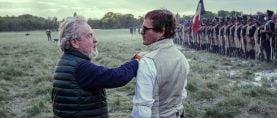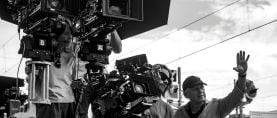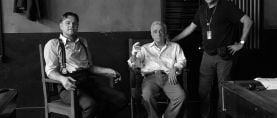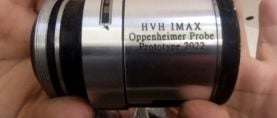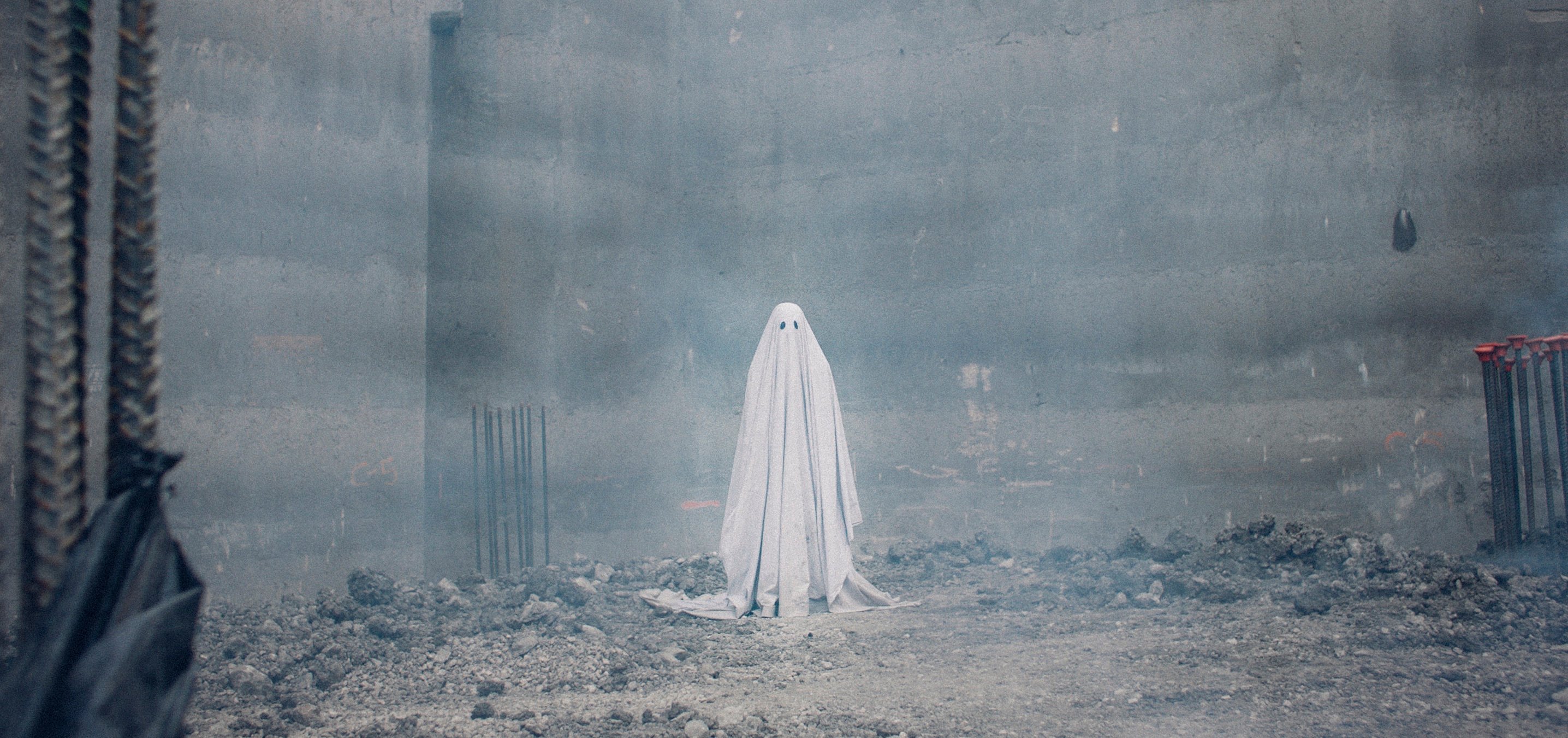
A Ghost Story: Shared Spaces
Writer-director-editor David Lowery discusses the making of this haunting tale.
Photos by Bret Curry. All images courtesy of A24.
David Lowery is going home. He just crossed the state line from Arkansas to Texas, driving from Cincinnati, Ohio — where, days before, he had wrapped production on his next feature, The Old Man and the Gun — to Dallas. Lowery will spend the next hour on the phone with AC, in conversation about his multifaceted role as writer, director and editor on his prior movie, A Ghost Story, which tells the tale of a bedsheet-clad ghost (played by Casey Affleck) who returns to haunt the house he’d shared in life with his wife (Rooney Mara).
Lowery’s earlier credits as a director include the features Ain’t Them Bodies Saints (AC Sept. ’13) and Pete’s Dragon (AC Sept. ’16). For A Ghost Story, he teamed for the first time with cinematographer Andrew Droz Palermo. (See that story here.)
American Cinematographer: How did you and Andrew come to partner for this project?
David Lowery: I had admired Andrew’s work for a while. I’d met him once or twice, so I knew we had similar tastes, and we had a bunch of mutual friends, so I felt that we’d get along really well. We talked about it over Skype, and then he started coming over to the Disney lot while I was doing [postproduction work on] Pete’s Dragon; we would go over look books and talk about references, and gradually we began to shot-list the film. It was a great collaboration. We got along instantly; we really were in sync.
Andrew’s done some directing, and you’ve done some shooting. Did you feel those prior experiences elevated your collaboration in any way?
Definitely. Having a cinematographer who understands how to tell a story allows problem solving on set to be even more collaborative. If we realize a shot’s not working and we need to cover it a different way, it’s much easier for me to lean on him and get his insights because I know that he’s a storyteller. That’s not to say that other cinematographers I’ve worked with in the past aren’t storytellers, but having his background as a director in my back pocket was definitely helpful.
When it comes to my proficiency behind the camera, I know what I’m talking about, but I’m not that great at it. I’ve come to a wonderful place where I can step aside and let the cinematographers do their work; I don’t try to get too involved in it because I understand what they’re doing and I know that they know better than I do. That’s a great place to be for me. But it definitely gives me a place to stand when I do have a strong opinion. [Laughs.] If I feel like we need to do something a certain way, I have just enough know-how to be able to talk about it in a way that makes sense to a cinematographer on a technical level. Hopefully that’s helpful and not too annoying.

You were working again with production designer Jade Healy, who shared the role with Tom Walker. When you bring in a production designer, what are the first things you discuss?
It’s interesting because when I work with Jade, we don’t have to talk about things anymore. This was our third feature together; we just know exactly what we’re doing. That’s one of the things you always look for in a collaborator: someone with whom you can achieve that level of non-verbal communication. I can tell her what the project is, and she knows me well enough to know what I want, what I’d like to see, and what is right for the project. That’s a wonderful gift to have.
She was going to have to leave at one point to go do The Killing of a Sacred Deer — she needed to go scout for a week during our shoot — so we knew someone else needed to be there on a day-to-day basis. Tom Walker had done [director Shane Carruth’s] Upstream Color and worked on a bunch of projects with us in Dallas, so he was a natural fit.
The film that I just finished was the first I’ve done without Jade; because the schedule kept pushing, she was on another movie. Jade and I communicate with a glance, and having to figure out how to speak about those things again was an interesting challenge. I’m so used to that process being instinctive.
What sort of collaboration do you try to foster between the movie’s production designer and cinematographer?
That’s also got to be very close. We all step out of our lanes when we’re collaborating, and when the collaboration is a good one, that’s totally okay. Jade will have comments on the framing, and Andrew will have comments on the sets, and I’ll have comments on both of those things. In this case, because the house was such a central location, we all had a lot of input into what we were doing. Whether that was how distressed the paint was on a wall, or where a chair was in a room, or whether a coffee table was going to get in the way of dolly track, or whether a frame that we put together didn’t quite do justice to the design or the feng shui of the house — all of those things came into play in a very concentrated way because we were all so focused on that one location. Usually you’re shooting in one location and the production designer is off getting the next one ready. In this case we were always in one spot together, so the creative discourse was very concentrated and very collaborative in that regard.
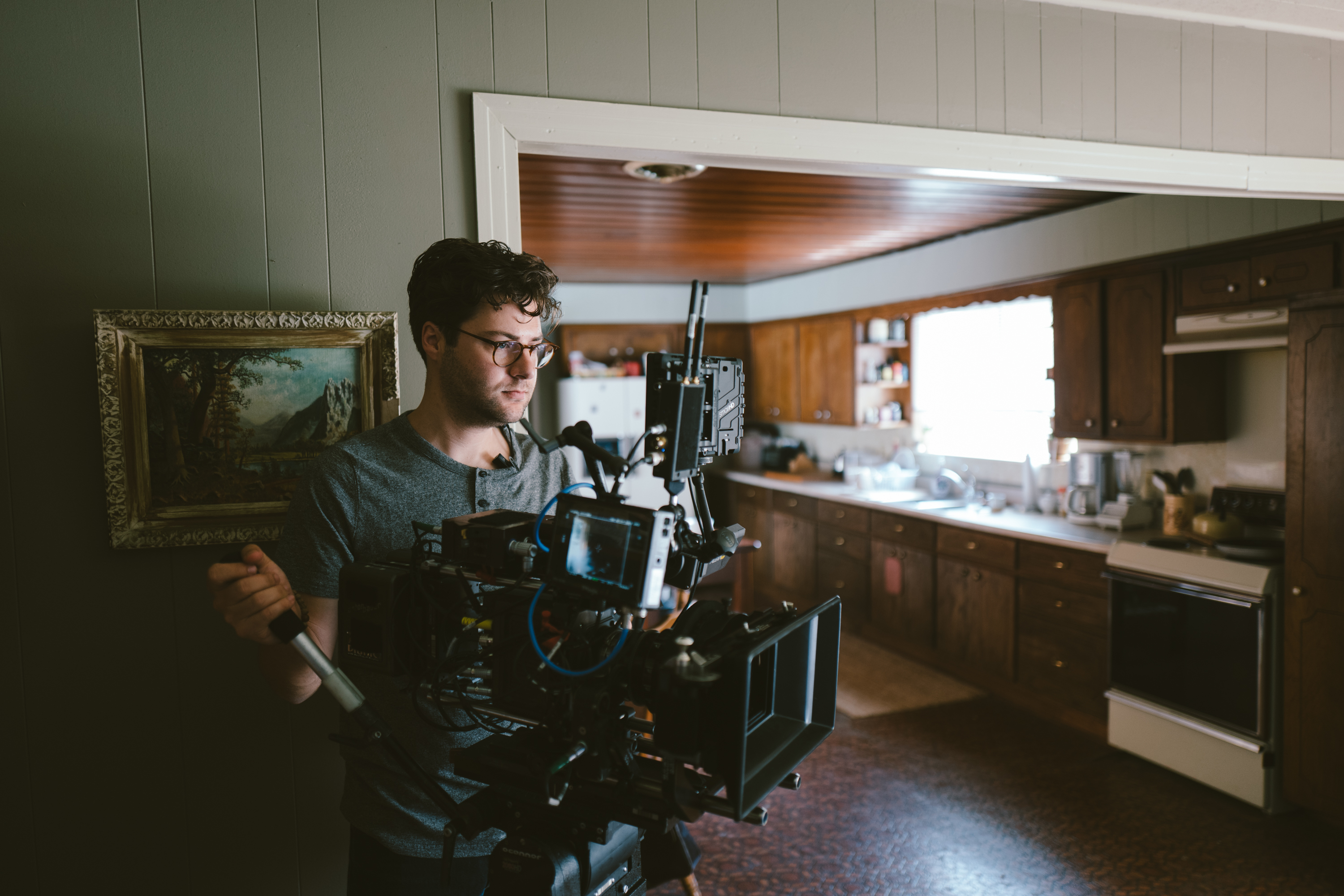
Costume designer Annell Brodeur has also been a longtime collaborator. Were the two of you surprised by how challenging it was to realize the movie’s bedsheet ghost?
The challenges of the ghost costume were a big surprise. I thought that was going to be the easiest part of it; I was not expecting it to be as difficult as it was. It was a good lesson in how a concept you have in your head that seems incredibly simple can be incredibly difficult to realize in three dimensions. The first test that Annell did was literally putting a bedsheet over somebody’s head and cutting holes in it [for the eyes]. I thought it would be as simple as that — but then I looked at the video that she took, and my response was, ‘Well, this looks dumb. I would never want to see a whole movie about a ghost that looks like this.’ [Laughs.]
I still felt the concept was good, but I knew that we had to make this sheet ghost look the way it would look in your head as opposed to what it actually looks like. So she started to put together this far more complex ghost costume, with a lot of structure and a lot of layers. We also realized that we’d need to puppeteer the costume and control the way it moved. Again, looking at it through a viewfinder, it felt different than it did in real life.
It changed the way we shot the movie. We would frame up a beautiful shot of the house, and as soon as the ghost was there, it all of a sudden didn’t work anymore. It was remarkable how it would just suck all of the air out of a room in a visual sense. It was a very dominant form; it really took over the space in a way that we hadn’t expected. The rule of thirds was thrown out the window by this sheet. [Laughs.] So we really had to think about every shot in a new way, and think about how the ghost was holding the frame, and make sure that would work for the scene — because if it didn’t, it had an unintentionally comic effect and tended to make every shot look bad.
Once Casey Affleck’s character became the ghost, did you think about putting somebody else underneath the sheet?
I really thought that one of the best things about this movie would be that you were going to be able to tell that it was Casey under the sheet. But we realized very early on that that didn’t work. One of the things the sheet exaggerated was any sort of physical trait; it just didn’t communicate the way we expected it to. The first time he wore it was when he sits up and walks out of the hospital morgue. His specific gait as a human being was so exaggerated by the sheet that it felt too human — which is ironic, because that’s what we were going for.
The more we had the ghost remain still, the better it worked. I think we reshot the [sequence] of him coming home about three times, and each time he did a little bit less, until finally the version that’s in the finished movie is him just standing completely still in different rooms in the house. That’s what the movie needed, but it took us a long time to figure that out. It was great that we were able to recognize that and work through it, but it definitely was stressful on the day when we were watching Casey under the sheet and thinking, ‘Oh, this doesn’t really work as well as we had thought it would.’ [Laughs.]
But we knew going into it that there were going to be scenes in the movie where he was in the shot as a human with the ghost there as well, so there were going to be times when other people had to wear the costume; the art director, David Pink, did a lot of the work because he and Casey have a lot of physical similiarities. There were also reshoots that we had to do without Casey. So it ultimately proved to be helpful that we needed to remove the humanity from the ghost.
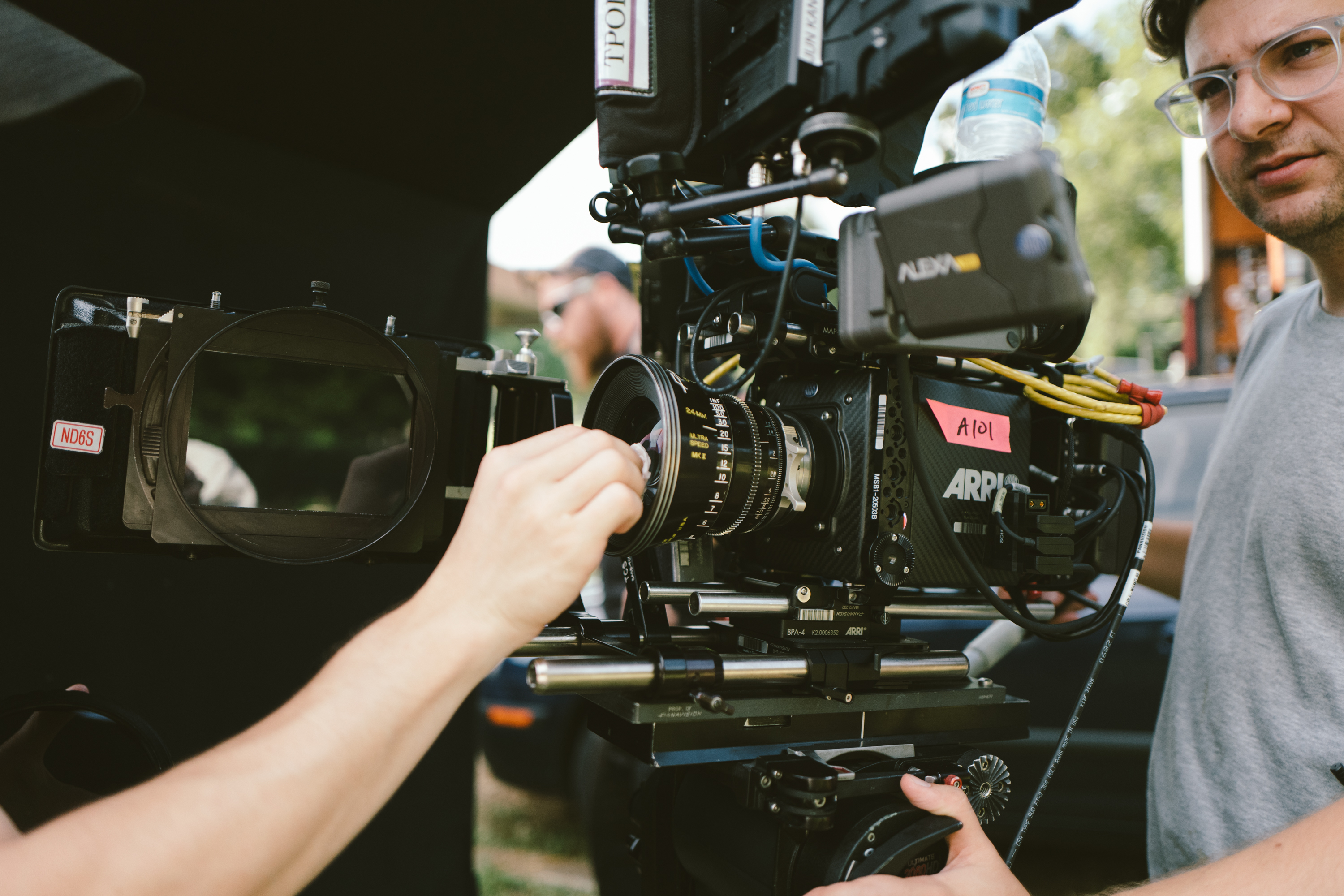
When I spoke with Bradford Young [ASC] about Ain’t Them Bodies Saints, he talked about the way you would workshop the scenes with Casey and Rooney. Do you prefer to find the scene and its blocking with the actors on the day, or do you tend to come in with more of a plan?
I usually have a pretty good idea of what I want, and then I get to set and see things in three-dimensional space and realize that maybe I have 75 percent of the idea. Then the actors come in and I realize that there’s enough room that we can start playing with it — and then I see their ideas and get excited and want to redevelop the scene with them. So I go from having a very set idea to having a lot of free-form exploration over the course of a single morning.
Some actors just want to know what you want; if you tell them to stand in a certain spot and say a line a certain way, they’ll be happy to do that. But other actors want to be part of that process. I love both versions, and I want to provide whatever the actors need to give the best performance. When I’m working with Casey and Rooney, there’s a great synergy that comes about, and it’s really fun to dig in and make the most of the scene. We had a 10-page dialogue scene that we spent a whole day on, and it was great. It was like shooting a play. And then the next day the three of us and the crew came up with different scenes that we could shoot — some based on that scene we’d shot the previous day, and others that were completely new and improvised. Having the room to dig in with them in that way was exciting and liberating, and I learned a lot as a director doing that. It was nice to have a movie that could accommodate that sort of exploration.
It’s incredible that you had that time to experiment given the restrictions: a 29-day shooting schedule, with all the responsibility squarely on you and your producers.
That was the idea, that if I’m producing this movie myself, I can make the call on whether or not one scene is worth more than another, or whether I should fit in more time developing something that seems to be going well as opposed to moving on to the next scene. So it was great to have that responsibility on my shoulders, because I was able to say, ‘Hey, I know we were supposed to shoot this whole scene with the ghost today, but instead let’s just shoot Casey and Rooney putting more stuff together, because I think we can use it.’ And it turned out to be very helpful to have all of it. Being able to make that call — as opposed to having to go to producers or financiers to explain why you would need to do this — was definitely a great liberty and a great luxury, and one of the benefits of making a movie like this.
Andrew mentioned that since shooting A Ghost Story, when he watches an old movie framed in 1.33:1, he gets so jealous of how effortless they made it seem.
It was definitely harder than we thought it was going to be. By the time we finished shooting all of our pickups and everything, I think we’d finally figured out how best to use that aspect ratio.
We were shooting natively 4:3 with the [Arri] Alexa Mini, but then there were a couple of days where we had a second camera, which was 16:9, which we were going to crop. So we had one monitor that would have a full 4:3 image, and then the other one would have the 16:9 image with 4:3 guidelines — and we got really excited seeing a widescreen image. One of those days was when we were out on the ranch shooting the pioneers sequence. Being in a big, open vista in widescreen, it was really tempting for us to say, ‘Did we make a mistake? Should we have shot the whole movie in widescreen?’ There’s a comfort there; it’s a very difficult thing to let go of when you’re so used to it.
But we’d made the decision to shoot most of the movie natively in 4:3 so we wouldn’t be able to change our minds later — we knew that temptation would be there. And once we got the [1.33:1] extraction out of the second camera, we were very happy that we’d stuck to our guns.
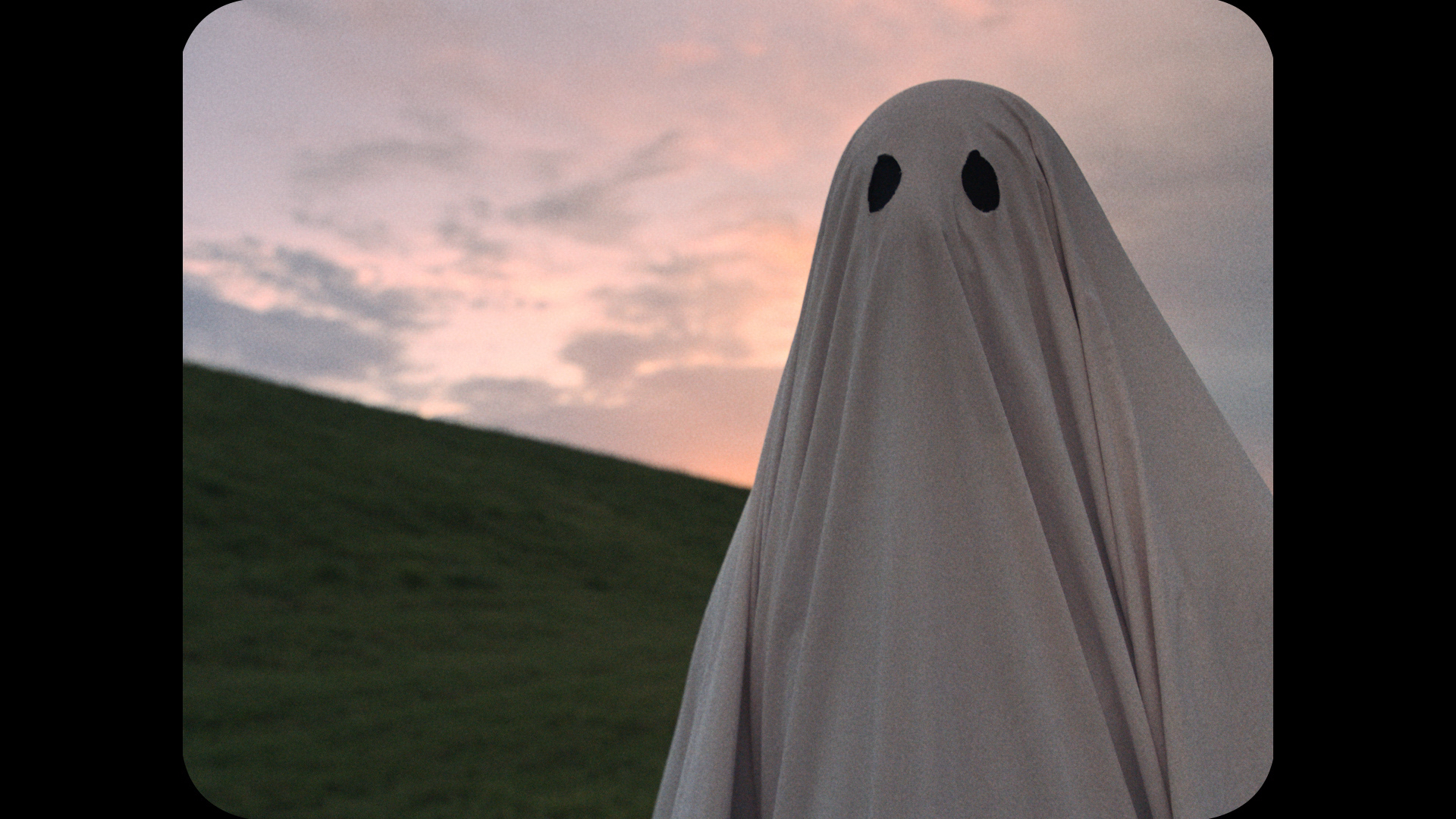
The rounded corners really emphasize the frame. It becomes like a metaphorical veil through which you’re watching the story unfold.
That was the reason for putting those vignettes on there. It was designed to create a sort of proscenium that you never completely forget about.
Did you experiment with that? Did you try not having the vignettes?
I had them in mind early on but wasn’t sure if they would work. My greatest fear was that people would see them and think it was like an Instagram filter as opposed to a strong aesthetic choice — it gives it a sort of vintage photo or vintage slideshow feel. But when I’m watching a movie that’s in 4:3 on a television or even in a movie theater if it’s not been masked properly, I’m always hyper-aware of its boxiness. Because all of our TVs now are 16:9, you’re always going to have the pillar-box. I wanted to lean into that and create something that made it feel more cohesive. I never wanted to feel like we were cropping something; I wanted to feel like the aspect ratio was ingrained into the structure of the movie in a physical sense. Putting those vignettes on there bound everything together; it wrapped it all up and placed it behind this proscenium that was very present.
[Producer] Toby Halbrooks, [producer] James M. Johnston, Andrew, Jade, myself — we all were debating whether or not it was too visible and whether it would take you out of the film too much. We screened it with and without the vignettes, and ultimately it just felt like it added something. We couldn’t quite quantify it and we couldn’t quite describe it, but it gave something to the experience that was worth having, and to me it made the entire film — which is strange and goes in a lot of different directions — feel of a piece. It helped me contextualize it in a very physical way, with this 4:3 proscenium that we were building into it. But we experimented with different degrees of vignettes and whether they should be blurred. In fact, the version that was at Sundance is a little different than the version that’s going to be released; we finessed the vignettes a little further.
I took comfort in other movies that had done something similar. Post Tenebras Lux [AC July ’13] doesn’t have a vignette on it, but [director] Carlos Reygadas shot it with this lens that had a very prominent spherical distortion, and it really gives the film its own unique identity. And there’s a film called Jauja with Viggo Mortensen that had a vignette similar to what we did, and when I watched it, I stopped noticing it; it became a part of the movie.
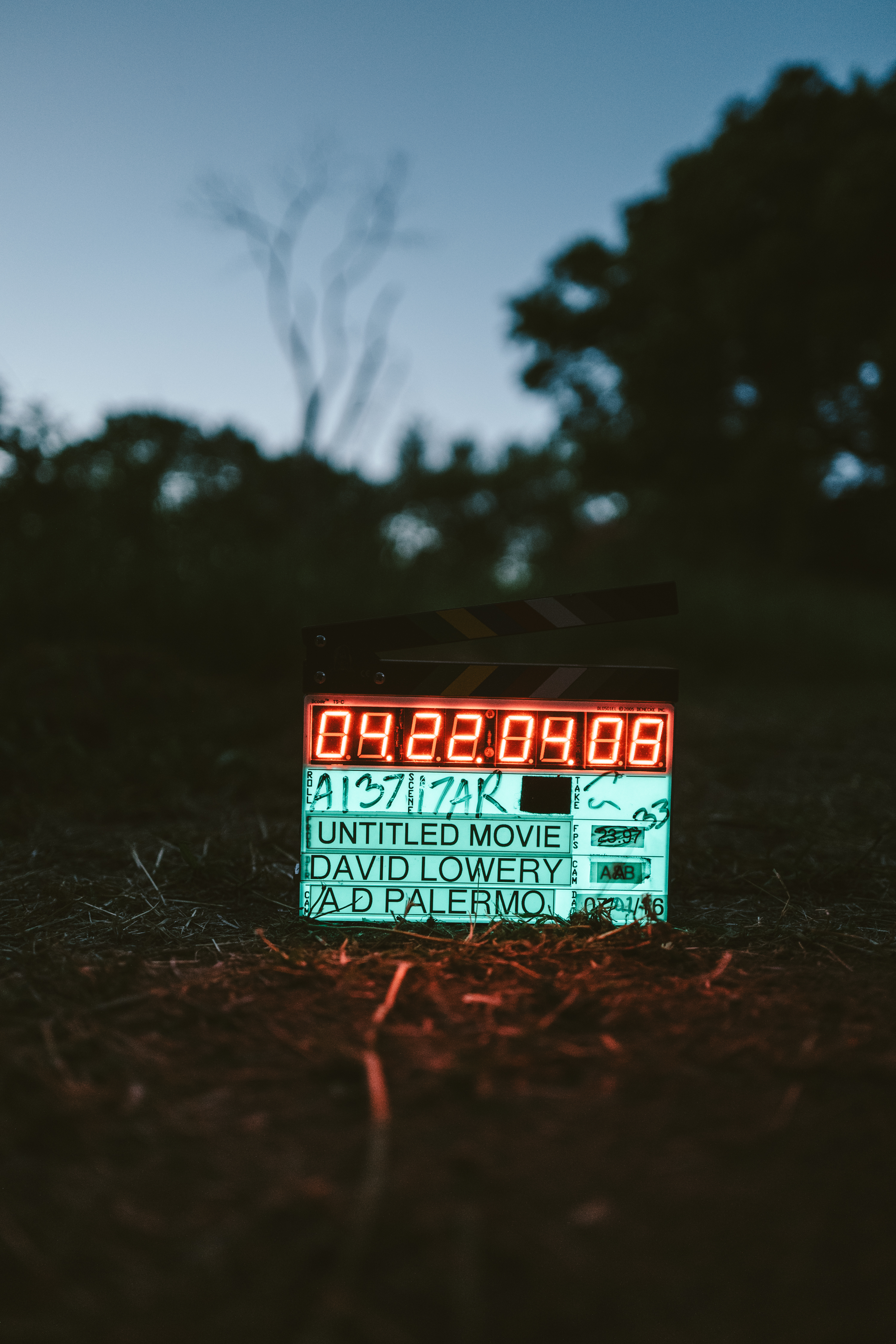
Where did the idea come from to shoot the ghost at 33 fps? Why that particular frame rate?
I didn’t want the ghost to feel like he was moving in slow motion, but I wanted him to have an ethereal quality. I wanted the fabric to move in a slightly less physical way, even though he is a very tangible character in the movie. I felt that if we shot at a higher frame rate, but somewhere below 48, we could achieve that, where he would feel different and somewhat otherworldly without feeling like he was just being filmed in slow motion.
On Pete’s Dragon we actually shot at 33 in a number of sequences for that same reason. There were sequences where I wanted the emotional quality to be pronounced to a degree that I felt 24 would undercut. I was talking to Bojan [Bazelli, ASC] about what frame rate to use; I’d suggested 27, and he said 33 is actually the best because it has fewer artifacts and a nicer blend on the Alexa. So that’s where 33 came from; it was a suggestion on his part on Pete’s Dragon. When we were deciding what rate to shoot the ghost at, I felt that if 33 worked on Pete’s Dragon, it would work on this one, and that proved to be the case.
Was everything with the ghost shot at 33, or did the ghost have to be in motion for you to go to that frame rate?
If the ghost was the only character in frame, even if he was standing still, we would almost always shoot at 33. If he was interacting with another human being, that was when it was tricky. We would sometimes shoot two plates: We would shoot Rooney, and then we would shoot the ghost, and then we would composite them together. We would try to either shoot them separately or just really restrict the ghost’s movement — or if Rooney was holding still, like when she was in bed, we would shoot at 33 because we knew she wasn’t moving enough for it to register.
On your blog, you wrote that shooting the movie was a “terrifying, gut-wrenching experience” in which you were constantly agonizing over whether the film was anything more than an experiment. Was that feeling unique to A Ghost Story, or is that what making a movie always feels like?
Especially coming out of one right now, I am acutely aware that that’s just how I feel when I’m making a movie. Which isn’t great. I’m trying to change; I’m trying to turn the gears around in my head so that I’m not approaching everything with this sense of dread and this fear that I’ll be found out. [Laughs.] The truth is I do know what I’m doing; I just put a lot of pressure on myself to make sure it’s done right.
Because the idea of a ghost that was just a guy in a bedsheet was so central to the film — and was so ludicrous at the same time — I was constantly agonizing over whether or not it would work. There were plenty of times when the ghost just looked dumb. I would be there on set with the crew watching over my shoulder, and I just felt the conceit of this film crushingly weighing down on my shoulders. Every day, I was waiting for someone to tell me that it was a terrible idea and that we should just stop. But deep down I knew that it could work if we did it right — I just was never sure if we were pulling it off until we were well into postproduction.
But it is something I feel on every movie. I felt that on Pete’s Dragon, I felt that on Old Man and the Gun, and it’s because I put so much pressure on myself to not screw up. I’m trying to get better at trusting myself so that I don’t go into every day with that gnawing sense of dread. It’s definitely part of the moviemaking process for me, so I just have to grin and bear it to a certain extent.
I suspect that feeling’s actually fairly common.
I take great solace in knowing that Spielberg feels that way. He’s said on multiple occasions that the hardest part about making a movie is getting out of the car in the morning. And that’s true — that’s the hardest part! That feeling of getting out of the car, knowing you’re about to have to make really intense decisions for the next 12 to 14 hours — it’s a very delicate moment in your morning. [Laughs.] Knowing that he feels the same way is a great comfort to me.
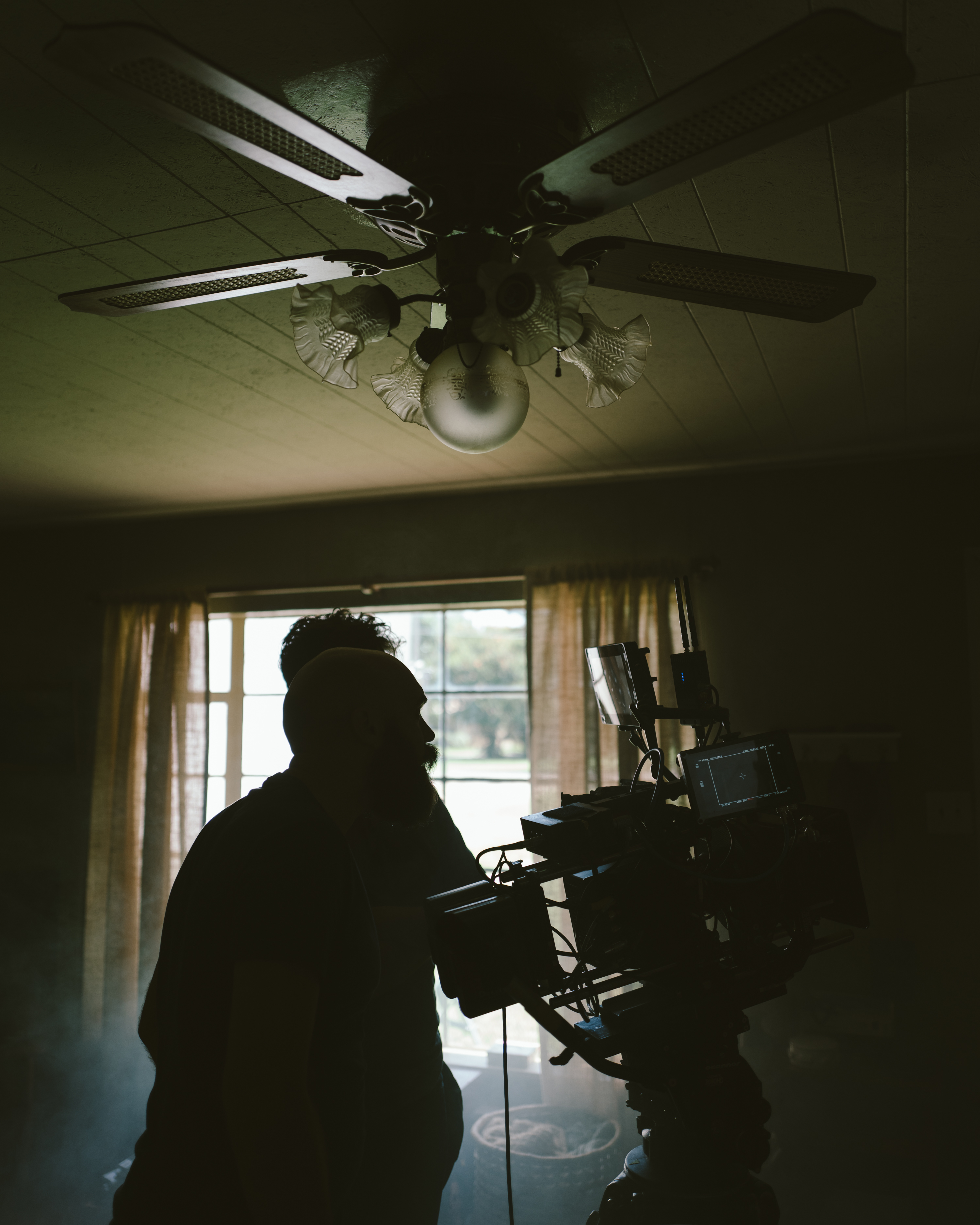
Andrew spoke about his tremendous respect for your editing, and your ability to take shots out of the context in which they were originally shot and insert them seamlessly into different sequences. Are you looking for those opportunities while you’re shooting, or can those solutions only be found in the editing room?
It’s a little bit of both. There are times when I’ll be shooting something on set and I’ll see something that I didn’t expect; I’ll mentally file that away, and maybe it will work out in the edit and maybe it won’t. It won’t change what we’re doing on the day, but definitely I’m aware of how I might be able to utilize those things later. But other times it’s just problem solving, and trying to make the most of a moment, and being very flexible with what was shot.
I’m a big believer in the plasticity of cinema — the idea that no matter how much preparation you might have put into a single shot and how much emotional intent might be layered into it, at the end of the day it’s how you use it in the final product that matters.
Do you look forward to the editing process, or does that again fill you with dread?
No, I love the editing process. That’s my comfort zone. I actively look forward to it. I shoot for the edit, and I’m often talking to the cast and crew on set about how something’s going to get cut together, and I have to stop myself because I’ll get carried away. So that’s always on my mind; I’m always cutting things together in my head as we’re shooting.
One of the benefits of working with another editor is that I’m able to work on the edit while we’re in production — not to a huge degree, but being able to see material put together in advance is always helpful. On Ghost Story we had Shane Carruth putting it together while we were shooting, and he was on set a little bit. Once we got through the first leg of the shoot, he went off to direct, and I took over the edit at that point.
He came up with a lot of great ideas in terms of structure, in terms of how to utilize flashbacks, and also ideas for shots — it was his idea to have a point of view from inside the wall as the ghost was [trying to retrieve the note that Mara’s character had hidden there]. I’ve got to give a lot of credit to him for helping us make the movie better.
You had worked with Shane previously — you shared editing duties on his feature Upstream Color.
Yeah, I edited the film with him, and that was an amazing collaboration. I still cite that as one of the most satisfying creative endeavors I’ve ever partaken in. So I was really glad that we were able to work together a little bit on this one as well.
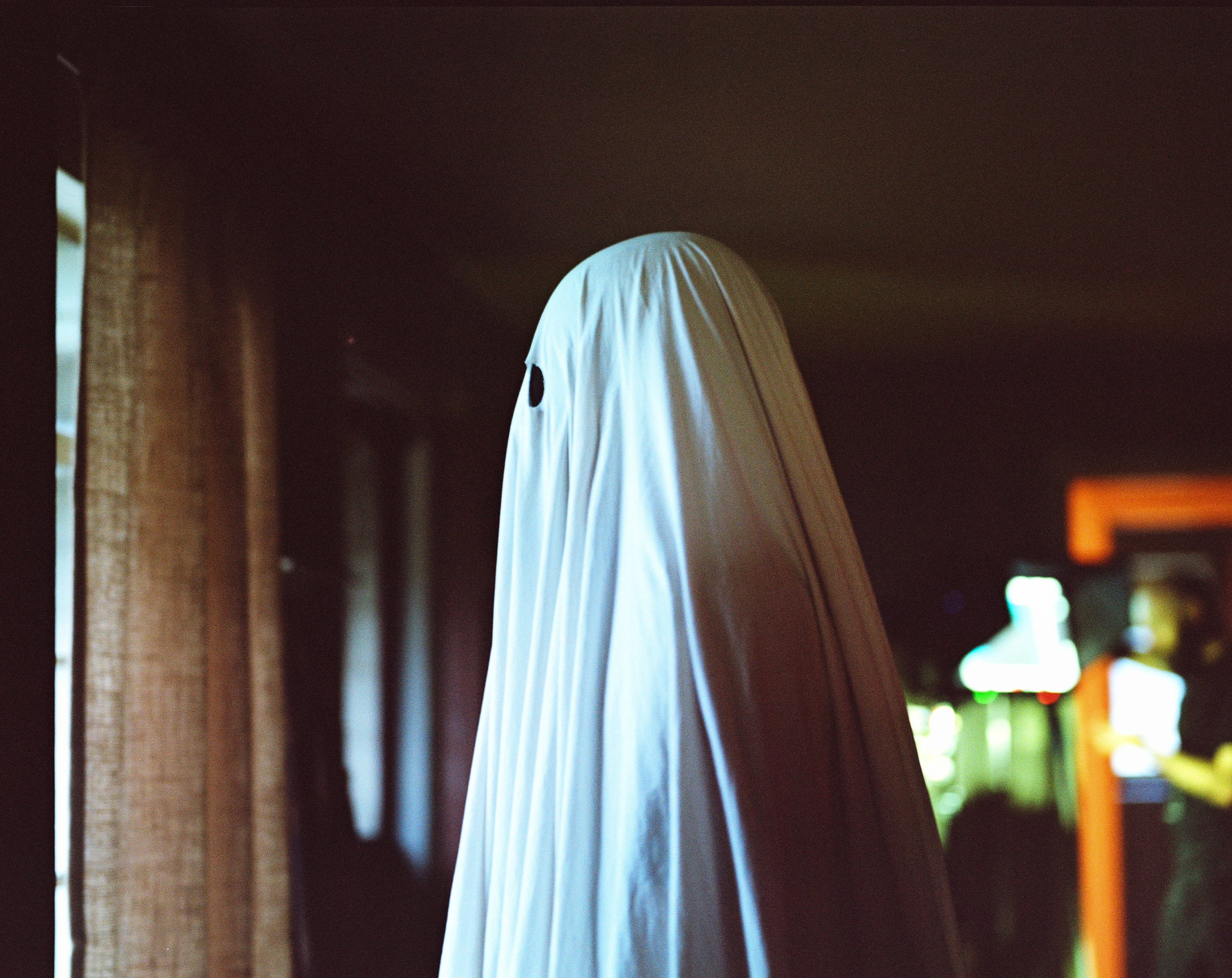
You grew up in Irving, where you shot A Ghost Story — is that right?
Yeah, it’s a little suburb right outside Dallas — former home of the Dallas Cowboys. I didn’t intend to shoot there, but that just happened to be where we found the house. It was a couple miles down the road from my parents’ house, and they still live there. It was really a nostalgic experience to be shooting there.
The movie’s so much about time and place. Did being in your hometown magnify those themes for you?
Absolutely. It definitely added a layer of meaning to the entire experience for me, and on a subconscious level I think it probably amplified the degree to which we were paying attention to those themes. The script itself was very threadbare. The relationship between Casey and Rooney was not very developed in the pages of the script; the ideas of time and place were not very fleshed out. Those were things that really began to take on greater significance as we were shooting, and the fact that I was so steeped in my own personal history as we were making it played a huge part in that.
Once the edit was locked, were you surprised by the movie you’d made, or did it look like what you thought you were setting out to make?
It looks exactly like what I set out to make. That was a great comfort. It was nice to know that something I conceived of was executed with such exactitude. But the way the movie works on an emotional and psychological level is something I wasn’t expecting. I did not expect it to be an emotional experience; I kind of thought it would be more of an abstract art piece. The degree of emotion that it contains and elicits in me as an audience member always surprises me.
This is the one movie I’ve made that I don’t completely have a grasp on, because I was scratching at things in my own life that I haven’t fully reconciled with, and I was trying to approach big ideas that I don’t have answers for. It’s the only movie of mine I can watch that still feels like a mystery to me: I watch it, and about two-thirds of the way in I forget what’s going to happen next. That is not something that has ever happened to me before, and I don’t expect it to happen that much in the future.
So I guess the answer is yes, it surprised me. As much as it resembles the movie I had in my head, the finished product definitely was not what I expected. And that’s a great thing. I’m really happy with that.
For access to 100 years of American Cinematographer reporting, subscribers can visit the AC Archive. Not a subscriber? Do it today.
